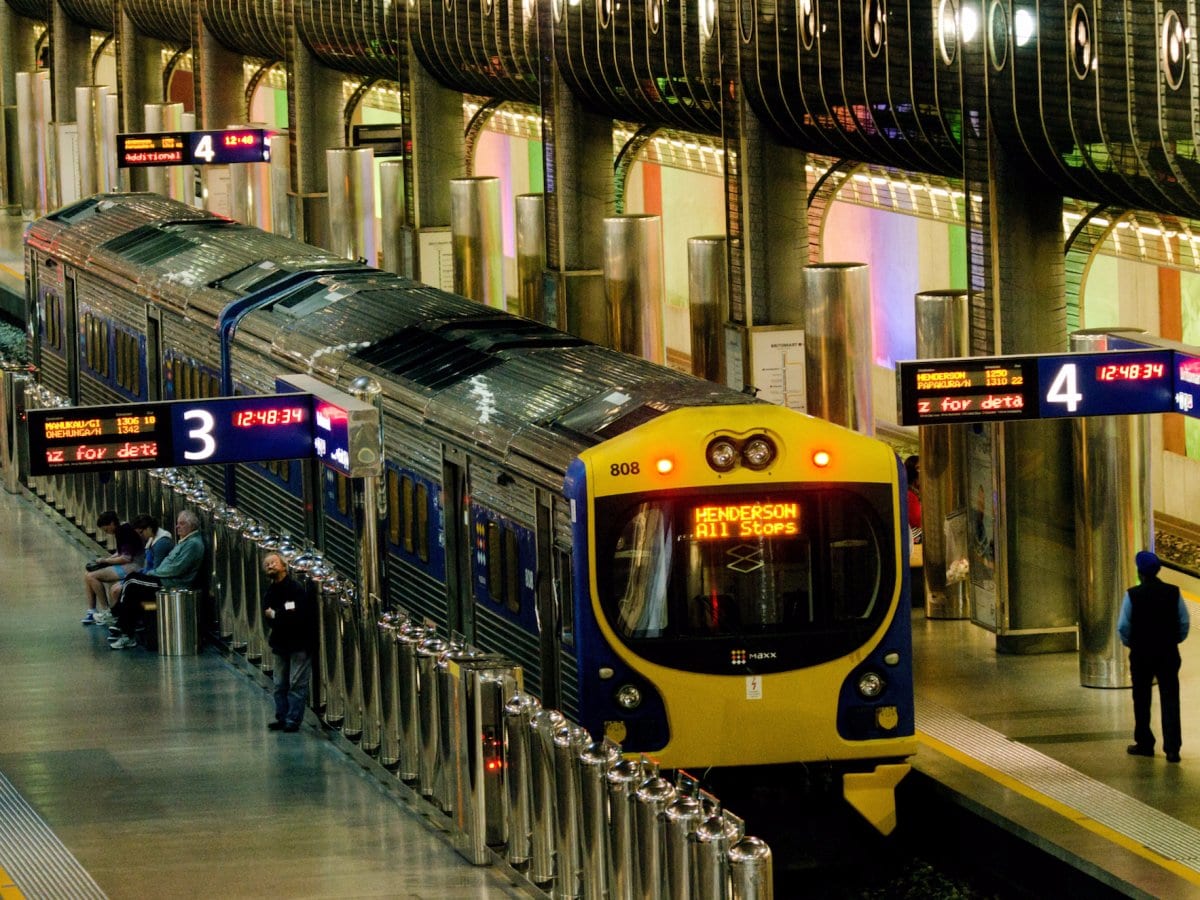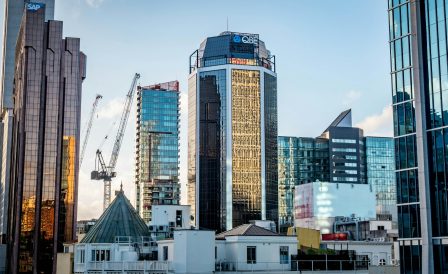The city of Auckland has a highly developed public transit system.
The most comfortable way to get around the city is by bus, train, and ferry. However, trains are currently only accessible in the central and southern parts of the city. The nicest and most scenic form of travel is by Ferry, which will come to the rescue if you need to travel around the bay or wish to observe the surrounding islands.
Payment
To pay your fare on public transportation you’ll need either cash or an AT HOP card. The price is determined according to zones established on the basis of distance between destinations. The the more zones you pass through on your trip, the higher the cost will be. For buses, each zone is approximately 4 kilometres. For ferries and some buses, there is a maximum fare price.
When paying with your AT HOP card, you receive a 20% to 25% discount on your fare (with the exception of the services Waiheke, NiteRider, and SkyBus).
Additionally, you can save money by purchasing daily and monthly travel. Children 5 and under ride for free. Children over 5 and students receive discounted fares. Senior citizens with the AT HOP SuperGold card receive ride for free after 9 am during week days, and without restrictions on weekends and holidays.
You can purchase an AT HOP online by registering for an account on the Auckland Transport site, at an Auckland Transport customer service office, or at shopping centres around the city. The cost of the card is $10 NZD, and must be set up with a minimum balance of $5 NZD. You can then add money according to your needs.
To pay with your AT HOP card, you must lay it on the card reader upon boarding a bus, entering the the metro, or at the docks when boarding a ferry. This process must be repeated upon reaching your destination. This allows the system to determine the length of your trip and accordingly withdraw your fare while applying any relevant discounts.
Buses
Buses are the most popular form of public transport in Auckland, connecting the city with Pukekohe in the south and Orewa in the North.There are certain standards of etiquette which must be observed on the bus:
- Buses stop only at strictly designated stops.
- If you see your bus, it is important to wave your hand so the driver knows to stop.
- Use the door nearest to the driver when boarding the bus.
- You must lay your card on the card reader and find a free space (be aware of seats reserved for persons with disabilities and pregnant women).
- When you need to exit the bus, don’t forget to hit the ‘stop’ button in advance.
- When leaving the bus, remember to exit from the rear and place your card on the card reader.
- It’s considered polite to look in the rear-view mirror, smile, and thank your bus driver for the ride.
- Drinking and eating is prohibited on buses, as well as resting your feet on the seat.
- If you plan to travel with pets or large objects, it’s worth familiarising yourself with the transport regulations on the website.
There are several specialised ‘Link’ bus services available in the city:
- CityLink – Red bus
The quickest way to get around the CBD (Central Business District). The buses run every 7-8 min from Wynard Quarter along Queen St to K-Rd and then back to Queen Street.
- InnerLink – Green bus
The InnerLink makes a wide circle around the city. The buses leave every 10-15 minutes from the rail station Britomart to Parnell, Newmarket, along K-Rd, Ponsonby Rd, and past Victoria Park before returning to Britomart via SkyCity.
- OuterLink – Amber/Bright Orange Bus
The OuterLink makes an even wider circle than the InnerLink. The buses leave every 15 minutes from Wellesley St, past AUT and Auckland University, through Parnell, Newmarket, Epsom, Balmoral, Mt Eden, St Lukes, Mt Albert, then to the Meola Rd entrance to MOTAT (Museum of Transport and Technology), through Westmere and Herne Bay, then back to Wellesley St.
City Train Network
The city train network is the fastest and most convenient method of transport between the Britomart Transport Centre and central Auckland, as well as some parts of eastern and southern Auckland.
All trains follow a strict schedule, however there are occasionally delays. That’s why it’s always important to have a ‘plan B’ when planning a trip.
You can view the train schedule here.
We recommend all newcomers to the city download the free mobile app Journey Planner.
Train etiquette is the same as on buses. The main difference is that it isn’t necessary to thank your conductor.
Ferry Service
Since the greater part of Central Auckland is surrounded by the waters the Ports of Auckland and the Hauraki Gulf, ferries are a key feature of the city’s public transport system. Ferries allow you to access various parts of Central Auckland and North Shore, as well as surrounding islands such as Waiheke.
The Downtown Ferry Terminal is located at the end of Queen St in a large orange building constructed in 1909.
Ferry lines:
- Downtown – Bayswater
- Downtown – Northcote Point Wharf –– Birkenhead
- Downtown – Stanley Bay
- Downtown – Devonport
- Downtown – Pine Harbour
- Downtown – Gulf Harbour Marina
- Downtown – Waiheke Island
- Downtown – Westpark Marina
- Stanley Bay – Downtown –– Rakino Island
- Downtown – Devonport –– Rangitoto Island
- Downtown – Gulf Harbour Bay Marina –– Tiritiri Matangi
- Downtown – Rotoroa Island
- Downtown – Coromandel
- Downtown – Great Barrier Island
Bicycles
Bicycles are a widespread form of transportation in New Zealand, as children often use bicycles or scooters to get to school.
It’s very common for New Zealanders to travel to work by bicycle. It is a convenient, popular, and time efficient method of transport. Practically every restaurant, parking lot, shopping centre, and park has reserved parking for bicycles.
Wearing a protective helmet is mandatory in New Zealand, as is hand signaling when changing lanes.
Uber and Taxis
Taxis and Uber are an expensive but effective method of transport. They are available all about the city and are easy to order. They are a quick and comfortable way to get around the city. The average price of a taxi or Uber ride in downtown Auckland starts at around 16 NZ$. To ride form the airport to the downtown area costs 60 NZ$ on average.
Car Hire
When traveling in a large group or with your family, hiring a car is an ideal option. Renting a car will cost you no less than 150 NZ$ a day. This is an excellent form of transportation if you are traveling and want to take in the extraordinary landscapes of New Zealand.
To a hire a car, you must have an international driver license, English language driver license, or any valid driver licence translated into English. You may drive for 12 months with an international license.
In most cases, the longer you rent the car, the less expensive the daily cost will be. There are some car hire companies that advertise discounts and even offer additional benefits to drivers. For example, 1 NZD$ per day rentals.
Important note:
In New Zealand there is a rule of etiquette that upon completing a bus trip, it is customary to thank your driver. So don’t forget to say ‘Thank your’ when leaving the bus.
We hope you found this article useful!
Bon voyage!




